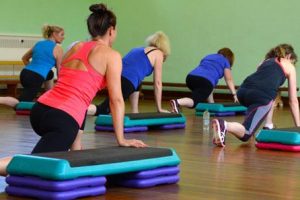In the world of fitness and exercise, strength, endurance, and cardiovascular health often take center stage. While these elements are undoubtedly vital, there is another key aspect of fitness that often gets overlooked – flexibility. Flexibility training, primarily achieved through stretching and relaxation techniques, plays a crucial role in improving athletic performance, preventing injuries, and enhancing overall well-being. This article will delve deep into the significance of flexibility training and provide comprehensive insights into the world of stretching and relaxation for fitness enthusiasts.
Understanding the Essence of Flexibility
Flexibility refers to the range of motion (ROM) at a joint or group of joints. It is a fundamental component of physical fitness, often overshadowed by its more visible counterparts, such as strength and endurance. However, flexibility holds equal importance in the following areas:
- Improved Athletic Performance: Greater flexibility enables athletes to move more efficiently, enhancing their performance in various sports and activities.
- Injury Prevention: Flexible muscles and joints are less prone to strains, sprains, and other common injuries.
- Posture and Balance: Good flexibility contributes to better posture, balance, and overall body alignment.
- Pain Relief: Stretching and relaxation techniques can alleviate chronic pain and discomfort, such as lower back pain and muscle soreness.
The Physiology of Stretching
Stretching is the cornerstone of flexibility training. It involves elongating the muscles and surrounding tissues, gradually increasing the length of the muscles over time. The physiological benefits of stretching include:
- Muscle Elongation: Stretching helps muscles become longer and more pliable, increasing the range of motion.
- Improved Blood Flow: Stretching enhances blood circulation to the stretched area, promoting nutrient delivery and waste removal.
- Relaxation Response: Stretching activates the parasympathetic nervous system, reducing stress and promoting relaxation.
Types of Stretching
There are several different types of stretching techniques, each offering unique advantages and serving various fitness goals:
- Static Stretching: Involves holding a stretch position for an extended period, typically 15-60 seconds. It’s excellent for improving flexibility and relaxation.
- Dynamic Stretching: Involves moving a joint through its full range of motion in a controlled, repetitive manner. Dynamic stretches are beneficial for warming up before exercise.
- Proprioceptive Neuromuscular Facilitation (PNF): A more advanced stretching technique that combines contraction and relaxation phases. It is highly effective for increasing flexibility.
- Active Stretching: Requires muscle activation to hold a stretch position. It is often used to improve strength and flexibility simultaneously.
- Passive Stretching: Involves an external force, like a partner or a stretching aid, applying pressure to increase the stretch.
Relaxation Techniques
In addition to stretching, relaxation techniques are crucial for enhancing flexibility and overall well-being. Some popular relaxation methods include:
- Yoga: An ancient practice that combines physical postures with deep breathing and meditation to promote relaxation and flexibility.
- Meditation: Mindfulness meditation can reduce stress and improve mental clarity, indirectly supporting muscle relaxation and flexibility.
- Breathing Exercises: Controlled breathing techniques, such as diaphragmatic breathing, can help release tension and increase flexibility.
- Progressive Muscle Relaxation: A method of sequentially tensing and then relaxing different muscle groups to alleviate muscular tension.
Incorporating Flexibility Training into Your Routine
To harness the benefits of flexibility training, consider these practical strategies:
- Warm-Up: Always warm up before stretching to increase blood flow and reduce the risk of injury.
- Consistency: Incorporate flexibility exercises into your routine at least 2-3 times a week.
- Balanced Stretching: Address all major muscle groups to maintain overall flexibility.
- Post-Workout Stretching: Stretching after a workout helps prevent muscle tightness and soreness.
- Gradual Progression: Avoid overstretching, and gradually increase the intensity and duration of your stretches.
- Listen to Your Body: Pay attention to your body’s signals and avoid forcing yourself into uncomfortable positions.
- Hydration: Stay well-hydrated, as dehydration can hinder muscle flexibility.
Conclusion
Flexibility training, consisting of stretching and relaxation techniques, is an integral part of a well-rounded fitness program. It not only enhances athletic performance and reduces the risk of injuries but also contributes to overall well-being and mental relaxation. By incorporating regular stretching and relaxation practices into your fitness routine, you can unlock the numerous benefits of improved flexibility and enjoy a healthier, more balanced, and more agile body. Flexibility is not just about bending your body; it’s about bending the limits of your potential in the world of fitness.





Add Comment